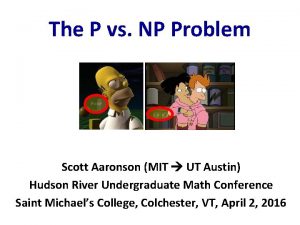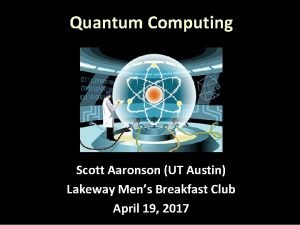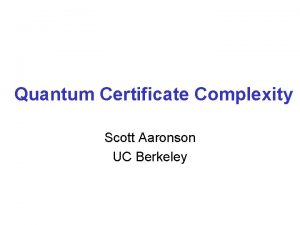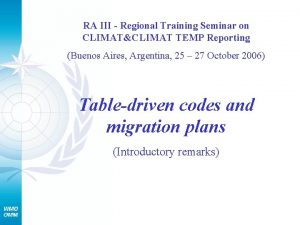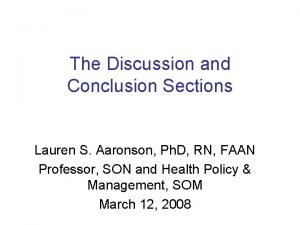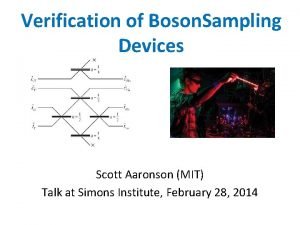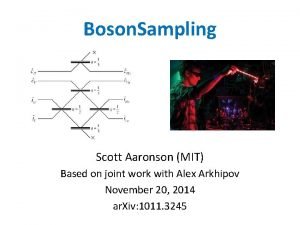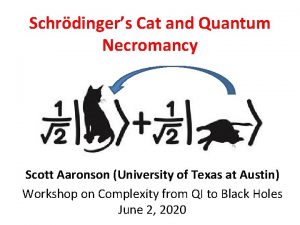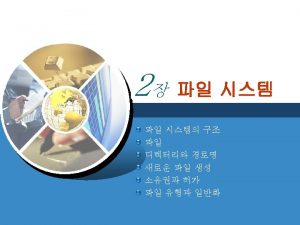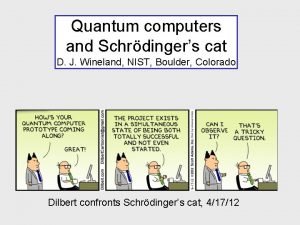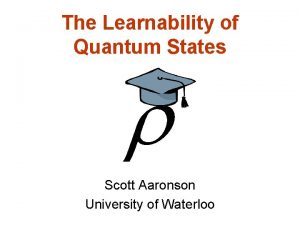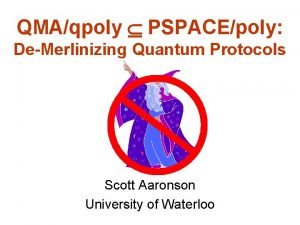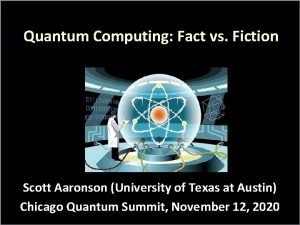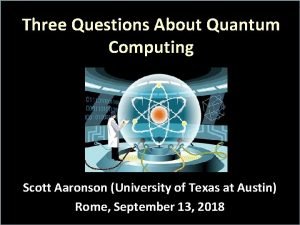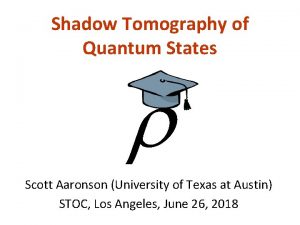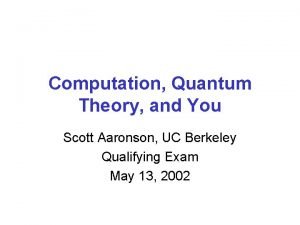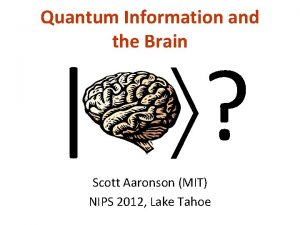Schrdingers Cat and Quantum Necromancy Scott Aaronson University











- Slides: 11

Schrödinger’s Cat and Quantum Necromancy Scott Aaronson (University of Texas at Austin) Slate. Star. Codex Online Meetup May 10, 2020

Quantum Mechanics in 1 Slide! If an object can be in two distinguishable states, call them |0 or |1 , then it can also be in a superposition a|0 + b|1 Here a and b are complex numbers called amplitudes satisfying |a|2+|b|2=1 If we measure, we see |0 with probability |a|2 |1 with probability |b|2 Also, the object collapses to Besides measuring, can also whichever outcome we saw rotate the amplitude vector while preserving its length

Interference of Amplitudes: The Signature of Quantum Behavior “Obviously, ” a 1 C p 1 p = p 1 + p 2 a a 2 C p 2 The true law: p When you try: p p 1 + p 2 !! p = |a|2 = |a 1 + a 2|2

The Measurement Problem How could the universe possibly have two rules—a random, discontinuous, irreversible rule for “when you look, ” and a deterministic, continuous, reversible rule for “when you don’t look”? Aren’t we governed by the same laws as the particles we’re measuring? But then where does the buck stop? It’s obvious! Many-Worlds solves everything!

Scott’s Interpretation Decision Tree! Is QM valid at all scales? No Yes Dynamical Collapse (Penrose, GRW…) Experiences of agents Copenhagen, QBism What’s the output of physics? State of the universe Can we add a mathematical ingredient to get one world? No Many-Worlds Yes de. Broglie-Bohm etc.

Do interpretations even matter? When people argue about QM interpretations (not counting dynamical collapse), do their beliefs pay rent? Are they arguing only about the map, not the territory? Ah, but what about Schrödinger’s Cat and Wigner’s friend? Deutsch: Yeah, what if we, like, uploaded your brain into a quantum computer and then interfered your mental states? Surely then it would matter that the Many Worlds are real!!

Meanwhile, in Quantum Gravity Land… Lenny Susskind cared about a different kind of “macroscopic” quantum state: superpositions of spacetime geometries. E. g. , He wondered whether computational complexity could provide the ultimate criterion for when two branches of a quantum state are “separated for good” So a few years ago, he emailed me a conjecture: Complexity( Seeing interference between |v and |w ) ~ Complexity( Mapping |v to |w or vice versa )

Lenny’s Conjecture is (basically) True! [A. and Yosi Atia, on the ar. Xiv any day now] Theorem 1: Given two orthogonal states |Alive and |Dead , suppose there’s a quantum circuit with T gates to distinguish (say) |Alive +|Dead from |Alive -|Dead. Then there’s also a quantum circuit with O(T) gates to swap the |Alive and |Dead states. Generalizes to: noisy distinguishing noisy swapping Theorem 2: Conversely, suppose there’s a quantum circuit with T gates that maps |Dead to |Alive with amplitude a, and |Alive to |Dead with amplitude b. Then there’s also a circuit with O(T) gates to distinguish |Alive +|Dead from |Alive -|Dead , with fidelity |a+b|/2.

Proof Sketch for Theorem 1 For quantum information folks, basically trivial! Suppose C| =|0 |… and C| =|1 |…. Then to swap… |Alive or |Dead C Z -1 C |Dead or |Alive

Stuff to Notice Suppose C|Alive = |Dead and C|Dead = -|Alive. Then |a+b|=0, so C provides no ability to distinguish |Alive +|Dead from |Alive -|Dead ! We’ve shown that this is inherent—not just a proof artifact More generally: our results are quantitatively tight, and we can prove it—unconditionally, without assuming P NP or anything of that kind! The ability to distinguish |Dead from |Alive does not imply the ability to map |Dead to |Alive , or vice versa E. g. , suppose |Dead =|0… 0 , while |Alive is orthogonal to |Dead and exponentially complex

Discussion To some extent, our result just “formalizes the folklore”: quantum interference between branches stops being detectable precisely when irreversibility sets in, when it’s no longer feasible to map one branch to the other Suppose we held that the Thermodynamic Arrow of Time, and our inability to reverse it, was essential to subjective experience Then by our result, there would be no such thing as a subjective experience of a superposition state. And thus, no way (even in principle) to “experience the Many Worlds for yourself” a la Deutsch’s proposal. Arguments over interpretations could continue forever!
